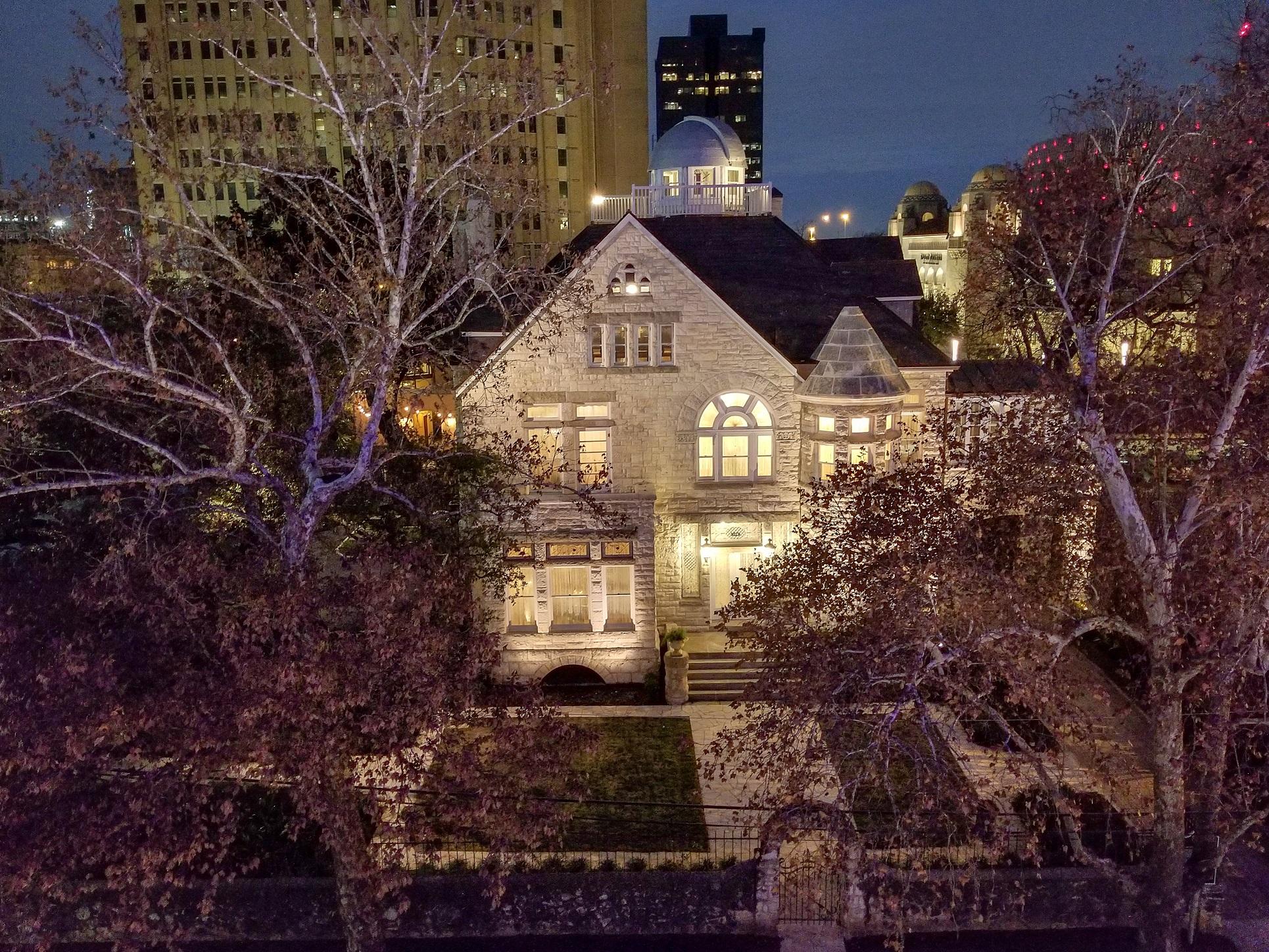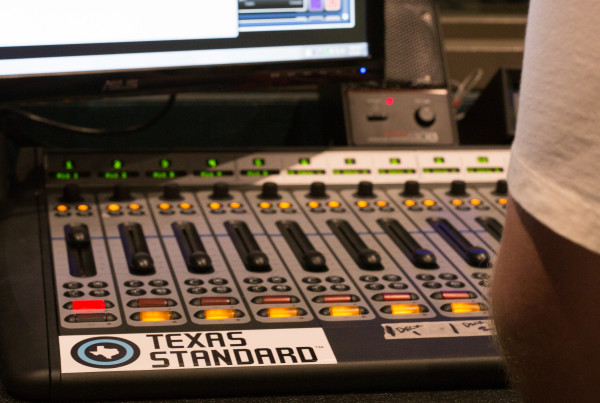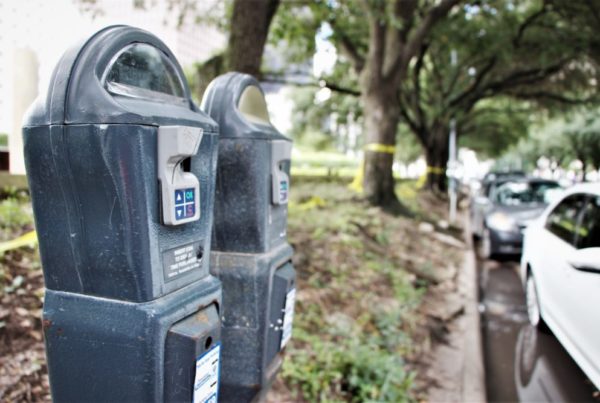From Texas Public Radio:
The historic Maverick-Carter House opened its doors to the public for the first time on Tuesday. The three-story limestone mansion on Taylor Street, across from the Tobin Center for the Performing Arts, was built in 1893 by William Harvey Maverick, son of Samuel Maverick who was a land baron and signer of the Texas Declaration of Independence.
The home was built in the Richardsonian Romanesque style by British architect Alfred Giles. Giles went on to design several Texas homes and courthouses. Along with furniture from the period, there are wood panels with carved details, throughout the house, and stained glass windows. It also has working features from the past such as a bell system to ring the kitchen for service.
“Each room has a button that communicates to the kitchen that notifies the cook or servant that there is a room in need,” says Carter Brown, great grandson of H.C. Carter, a prominent San Antonio attorney who bought the home from the Mavericks in 1914. “It has a nautical-style communication system between rooms. It’s really just a long tube to whistle through to get attention, and then talk through by opening flaps on both ends. Back in the day they were called annunciator boxes.”
Brown says it was his grandfather, David Brown, who saved and restored the house. He says his granddad told him the kitchen bells and annunciator boxes were not used to impress guests.
“My grandfather would say that they never really used either item, but they actually enjoyed scaring people with the loud shriek or bell,” he says.
H.C. Carter married Aline Badger in 1916. She brought some unique additions to the home, which were inspired by her education at the Boston Conservancy of Music and Wellesley College, her love of astronomy and her deep Episcopal faith, Brown says.
One addition she made was a small chapel, which includes a nearly century-old pump organ.
“The chapel was built in 1925 by Aline Carter and artisan Ethel Wilson Harris. She built these chairs and also put in this pump organ,” Brown says.
On the next story sits her piano and her typewriter, on which she wrote poetry. She served as the state’s official poet laureate from 1947 to 1949.
The home is serviced by an elevator that she used later in life so she could still reach her beloved rotating observatory on the rooftop.
“She had the elevator punched through to the third floor and also the second floor porch and first floor porch. She was also able to go up to the observatory and open up this hatch — here into her mid 70s — and enjoy the stars,” Brown says.
The observatory can be rotated at its base to offer a 360-degree rooftop view. Inside the observatory is painted the phrase, “When I consider thy heavens, O Lord.” Brown says Aline Carter was inspired by both her faith and her belief in science.
“Science was always a primary focus in her mind. As she saw it, science is a process for understanding the works of God,” he says.
Proceeds from public tours, business meetings and weddings booked at the home will go towards preserving the home and education programs for poetry and astronomy.















